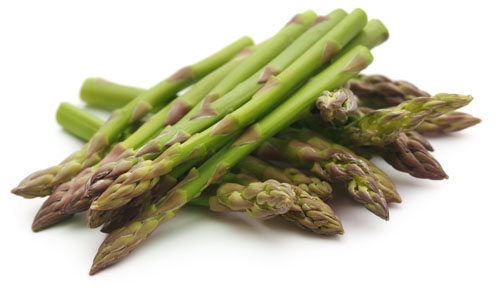Asparagus has been believed to hold incredible healing properties since ancient Greece. It’s even noted that Egyptians held it in such high regard that they depicted it in their architecture.
There’s a reason why this green veggie continues to be so popular and recommended by both physicians and dietitians. Not only is it incredibly healthy for you, but its unique texture and flavor make an appetizing addition to almost any dish.
Health Factor: Vitamin Packed
Low in calories (about 20 calories per cup), but high in nutrition, asparagus is a part of team superfood. It’s a great source of vitamin K, so noshing on this veggie can help promote blood clotting and bone health. Also high in folate, it’s an ideal food to consume during pregnancy, and can even prevent certain cancers and anemia.
Additionally, each one of those delightful, green spears contains Vitamins A, C, E, and B6; a variety of amino acids; and wide range of minerals with anti-inflammatory and antioxidant properties.
We’d be avoiding the elephant in the room if we didn’t talk about the fact that asparagus is a natural diuretic. By increasing your production of urine, it actually helps to rid your body of excess fluids and salt. As for the smell associated with it, that’s due to a chemical found in asparagus, known as asparagusic acid. When our bodies digest the asparagus, the chemical gets broken down into sulfur, thus producing the scent. Now, isn’t that food for thought?
 Versatility: More than Just for Steaming
Versatility: More than Just for Steaming
Roasting, steaming, sautéing, grilling – asparagus can be prepared in many different ways. Whichever you choose, the key is to cook it until tender. This tasty side dish is regularly paired with garlic, parmesan, lemon, soy and ginger flavors.
But, why not change it up a bit? Asparagus can be tossed into stir fry or served raw, chopped or shaved, and thrown on top of a salad. Wrapped in bacon or prosciutto, it becomes a deliciously simple appetizer. Swap out pork bacon for turkey bacon for a lighter alternative. It can also be served as a dunking option for your favorite dip. Puréed, asparagus becomes a creamy soup or topping for veggies or pasta.
 Picking the Perfect Asparagus
Picking the Perfect Asparagus
Skinny spears? Thick spears? Which bundle should you choose at the market? It turns out the diameter doesn’t fully matter.
Yes, fat stalks tends to be older, but no matter the thickness, ideal asparagus is firm, straight, and doesn’t bend. In fact, if you try to bend it, it should crack. Also, check the ends of the stalks, they should be moist and not look “woody” or dried out. Asparagus tips are another good indicator of freshness. Opt for asparagus with tightly closed ends that are dark green or purple. If the tips have started to yellow, you may want to pass on that bunch and look for another.
Peak Season: Late Spring
Asparagus season is the most active in New York State for the entire month of May. Since asparagus doesn’t store as well as other produce, you should definitely take advantage of getting your hands on this veggie during its peak.
Even though you can usually find it in the grocery store other times of the year, it’s never quite as tasty and can be higher in price because of the long trip it took to get to you. Keep it in the refrigerator, upright, in a container with about 1” of water in the bottom, and try to use it within 2-3 days. Otherwise, blanched and frozen asparagus can be stored for up to 8 months and can be a wonderful reminder of warmer weather during cooler months.


 Versatility: More than Just for Steaming
Versatility: More than Just for Steaming Picking the Perfect Asparagus
Picking the Perfect Asparagus